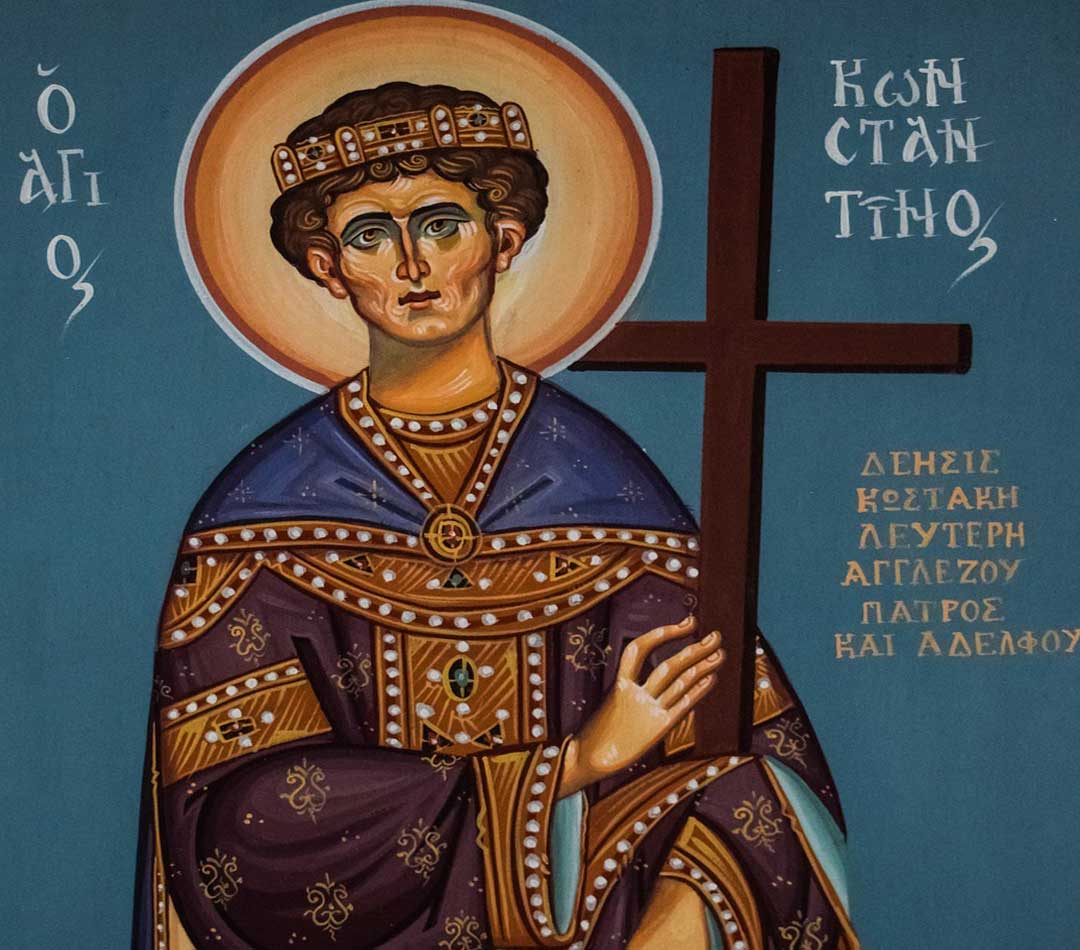We continue on Saint Constantine:
 The other great thing he did was the transfer of the Empire’s capital from Rome to the region Byzantis, this way establishing the Byzantium – the new Byzantine Empire. His decision was based on the fact that the place offered the advantage of having already been extensively rebuilt on Roman patterns of urbanism, during the preceding century by Septimus Severus and Caracall, who had already acknowledged the geopolitical significance and the commercial benefits of the region – widely known as the crossroad between Far East and Europe. The city was then renamed Constantinopolis (Constantine’s city or Constantinople in English) and issued special commemorative coins in 330 to honor the event. The new city was protected by the relics of the True Cross, the Rod of Moses and other holy relics. The new capital would often be compares to the “old” Rome as Nova Roma Constantinopolitana, the “New Rome of Constantinople”.
The other great thing he did was the transfer of the Empire’s capital from Rome to the region Byzantis, this way establishing the Byzantium – the new Byzantine Empire. His decision was based on the fact that the place offered the advantage of having already been extensively rebuilt on Roman patterns of urbanism, during the preceding century by Septimus Severus and Caracall, who had already acknowledged the geopolitical significance and the commercial benefits of the region – widely known as the crossroad between Far East and Europe. The city was then renamed Constantinopolis (Constantine’s city or Constantinople in English) and issued special commemorative coins in 330 to honor the event. The new city was protected by the relics of the True Cross, the Rod of Moses and other holy relics. The new capital would often be compares to the “old” Rome as Nova Roma Constantinopolitana, the “New Rome of Constantinople”.
The reign of Constantine established a precedent for the position of the emperor as having some influence within the religious going on within the Catholic Church of that time, i.e. the dispute over Arianism. He disliked the risks to societal stability that religious disputes and controversies brought with them, preferring where possible to establish orthodoxy. Causation given by the Donatism movement, Constantine summoned on 325 the Council of Nicaea, effectively the first Ecumenical Council. The Council of Nicaea is most known for its dealing with Arianism – which from then on became officially regarded as a heresy – and for instituting the Nicene Greed. Constantine also enforced the prohibition of the Council against celebrating the Lord’s Supper on the day before the Jewish Passover. This marked a definite break of Christianity from the Judaic tradition. From then on the Roman Julian Calendar, a solar calendar, was given precedence over the lunar Hebrew Calendar among the Christian churches of the Roman Empire.
In the spring of 337 Constantine fell sick and had known deaths was near. After the celebration of Easter he left Constantinople for the hot baths near his mother’s city Helenopolis (Altinova) on the southern shores of the Gulf of Izmit. There, in a church his mother built in honor of Lucian the Apostle, he prayed and he realized he was dying. Seeking purification, he became a catechumen and attempted a return to Constantinople, making it only as far as a suburb of Nicomedia. He summoned the bishops and told them of his hope to be baptized in the river Jordan, where Christ was baptized. He requested the baptism right away, choosing the Arianizing bishop Eusebius of Nicomedia as his baptizer. He died soon after that in a suburban villa called Achyron, on the last day of the Pentecost, on the 22nd of May 337 and he was buried in Nicomedia.
And so the Saint Constantine story ends, what a great person he was!
If you missed the first part you can read it here…



